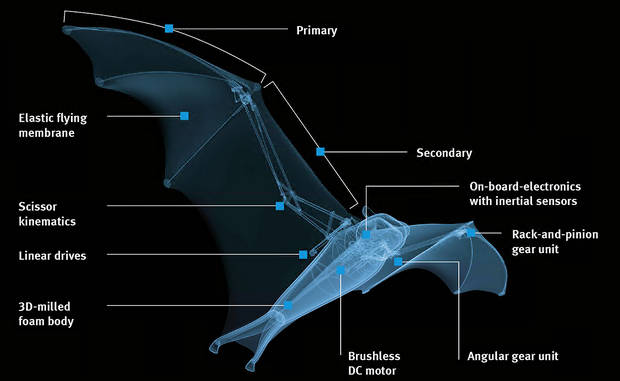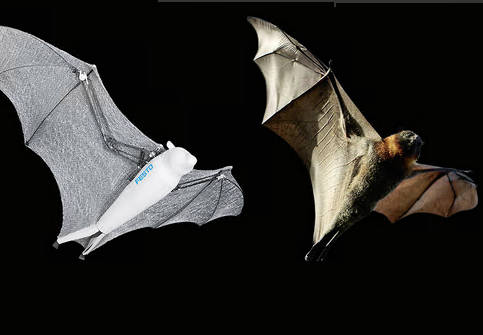| Festo's Flying Fox And Spider Robots Are Worth Seeing |
| Written by David Conrad | |||
| Saturday, 31 March 2018 | |||
|
It has been a while since we have featured an impressive bio-inspired robot from automation expert Festo, but, wouldn't you know it, two come along at the same time. Every now and again Festo builds a bio-inspired robot just because it can. It uses its expertise in automation and process control to implement something that looks like an animal and moves like that animal. The latest is the Bionic FlyingFox, and don't judge it on how it looks. It is how it flies that is the really impressive part:
There isn't much to add about the way the device flies after you have seen the video but it is more sophisticated than you might expect: "So that the BionicFlyingFox is able to move semi-autonomously in a defined space, it communicates with a motion-tracking system. The installation constantly records its position. At the same time, the system plans the flight paths and delivers the necessary control commands for this. A person performs the start and landing manually. The autopilot takes over in flight."
The fox is tracked using two infrared cameras on a pan-and-tilt head. These track the flight and provide position information from four active infrared markers on the legs and wing tips. The flight path and the movements needed to fly it are computed using machine learning - but there are no more details. The BionicWheelBot is a different sort of robot. It is biologically inspired but you might well think that it is more nightmare inspired especially if you have a phobia of spiders. It is inspired by the flic-flac spider, which was recently discovered in the Sahara Desert.
"The flic-flac spider can walk like other spiders. It can also propel itself into the air, however, with a combined sequence of somersaulting and rolling on the ground."
Take a look at the video: "In order to start rolling, the BionicWheelBot bends three legs each on the left and right of its body to make a wheel. Two legs folded up whilst walking then extend, push the rolled-up spider off the ground, and continuously push it forward whilst rolling. This prevents the BionicWheelBot from grinding to a halt and ensures that it can move itself forward even on rough terrain. In rolling mode, the artificial spider – like its natural role model – is much faster than when walking. At the same time, the robot can even overcome inclines of up to five per cent uphill." The flying fox is just beautiful to watch, but the spider could have some practical applications. Whatever elso Festo has proved, yet again, that it makes impressive biological robots.
More InformationRelated ArticlesIs It A bird? No It's A Festo Robot
To be informed about new articles on I Programmer, sign up for our weekly newsletter, subscribe to the RSS feed and follow us on Twitter, Facebook or Linkedin.
Comments
or email your comment to: comments@i-programmer.info |
|||
| Last Updated ( Saturday, 09 March 2019 ) |





